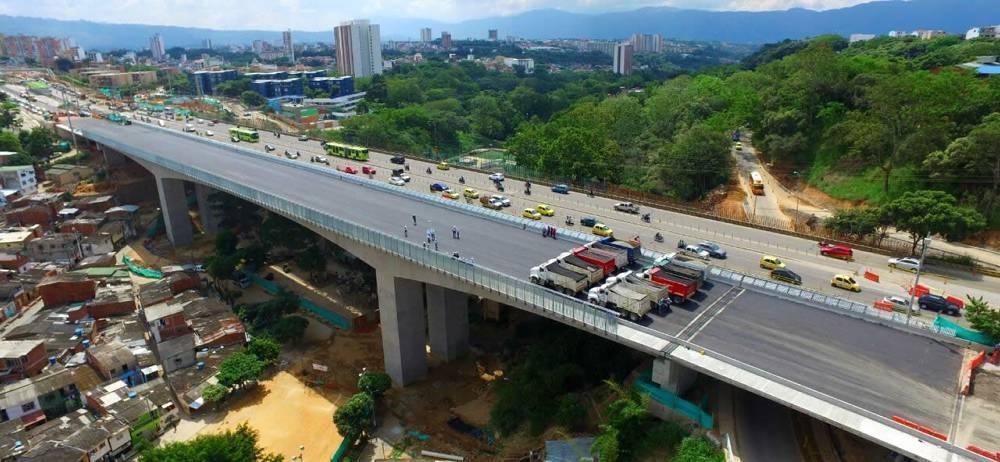Óptima Localización de Sensores en un Puente de Viga Cajón Utilizando Modos de Vibración Obtenidos de Análisis Numérico y Pruebas de Medición en Campo
Optimal Sensor Placement of a Box Girder Bridge Using Mode Shapes Obtained from Numerical Analysis and Field Testing


This work is licensed under a Creative Commons Attribution-NonCommercial-NoDerivatives 4.0 International License.
Copyright statement
The authors exclusively assign to the Universidad EIA, with the power to assign to third parties, all the exploitation rights that derive from the works that are accepted for publication in the Revista EIA, as well as in any product derived from it and, in in particular, those of reproduction, distribution, public communication (including interactive making available) and transformation (including adaptation, modification and, where appropriate, translation), for all types of exploitation (by way of example and not limitation : in paper, electronic, online, computer or audiovisual format, as well as in any other format, even for promotional or advertising purposes and / or for the production of derivative products), for a worldwide territorial scope and for the entire duration of the rights provided for in the current published text of the Intellectual Property Law. This assignment will be made by the authors without the right to any type of remuneration or compensation.
Consequently, the author may not publish or disseminate the works that are selected for publication in the Revista EIA, neither totally nor partially, nor authorize their publication to third parties, without the prior express authorization, requested and granted in writing, from the Univeridad EIA.
Show authors biography
Este artículo presenta un estudio comparativo de óptima localización de sensores (OSP) realizado en un puente de viga cajón usando modos de vibración experimentales y numéricos obtenidos en diferentes estados de construcción del puente. Es ampliamente reconocido que el monitoreo de la respuesta dinámica de puentes durante diferentes estados de construcción provee información invaluable para ajustar las consideraciones de diseño. Por lo tanto, existe una necesidad de desarrollar estrategias para determinar la localización óptima de sensores (OSP, por sus siglas en inglés). En el presente estudio, un método OSP basado en la maximización de la matriz de información Fisher (FIM) es utilizado. El uso de modos de vibración derivados de forma experimental y numérica es considerado en la determinación las posiciones OSP. Resultados de pruebas de medición en campo ejecutadas antes de conectar la dovela central de la luz principal también se incluyen en este estudio. El peso de la carpeta asfáltica en la determinación de las posiciones OSP es también considerado en las pruebas de medición en campo.
Article visits 508 | PDF visits 287
Downloads
- Bagheri, A., Alipour, M., Ozbulut, O., Harris, D. (2018). A nondestructive method for load rating of bridges without structural properties and plans. Engineering Structures, 171, pp. 545-556.
- Chang, M., Pakzad, S. (2014). Optimal sensor placement for modal identification of bridge systems considering number of sensing nodes. Journal of Bridge Engineering ASCE, 9(6):04014019.
- Chen, G-W., Omenzetter, P., Beskhyroun, S. (2017). Operational modal analysis of an eleven-span concrete bridge subjected to weak ambient excitations. Engineering Structures, 151, pp. 839-860.
- Costa, C., Ribeiro D., Jorge, P., Silva, R., Arêde, A., Calçada, R. (2016). Calibration of the numerical model of a stone masonry railway bridge based on experimentally identified modal parameters. Engineering Structures, 123, pp. 354-371.
- Hernandez, W., Viviescas, A., Riveros, C.A. Dynamic response assessment during the construction of a segmental bridge using finite element modeling and ambient vibration testing. Dyna, in Review.
- Kammer, D., Brillhart, R. (1996). Optimal sensor placement for modal identification using system-realization methods. Journal of Guidance, Control and Dynamics, 19, pp. 729-731.
- Kim, T., Youn, B., Oh, H. (2018). Development of a stochastic effective independence (SEFI) method for optimal sensor placement under uncertainty. Mechanical Systems and Signal Processing, 111, pp. 615-627.
- Kinemetrics Inc. (2016). [On line]. [Last access: 19 April 2016].
- Liu, K., Yang, R., Soares, C. (2018). Optimal sensor placement and assessment for modal identification. Ocean Engineering, 165, pp. 209-220.
- Meo, M., Zumpano, G. (2005). On the optimal sensor placement techniques for a bridge structure. Engineering Structures, 27, pp. 1488-1497.
- MIDAS Information Technology Co. Ltd. (2016). Midas User Manual, MIDAS Information Technology, Seongnam, South Korea.
- Prabhu, S., Atamturktur, S. (2013) Selection of Optimal Sensor Locations Based on Modified Effective Independence Method: Case Study on a Gothic Revival Cathedral. Journal of Architectural Engineering ASCE, 19(4), pp. 288-301.
- Riveros, C., García, E., Rivero, J. (2013). A comparative study of sensor placement techniques for structural damage detection. Revista EIA, 10, pp. 23-37.
- LANL/UCSD Engineering Institute. (2010). Structural Health Monitoring Tools (SHM Tools). Los Alamos national laboratory, US.
- Vicenzi, L., Simonini, L. (2017). Influence of model errors in optimal sensor placement. Journal of Sound and Vibration, 389, pp. 119-133.




